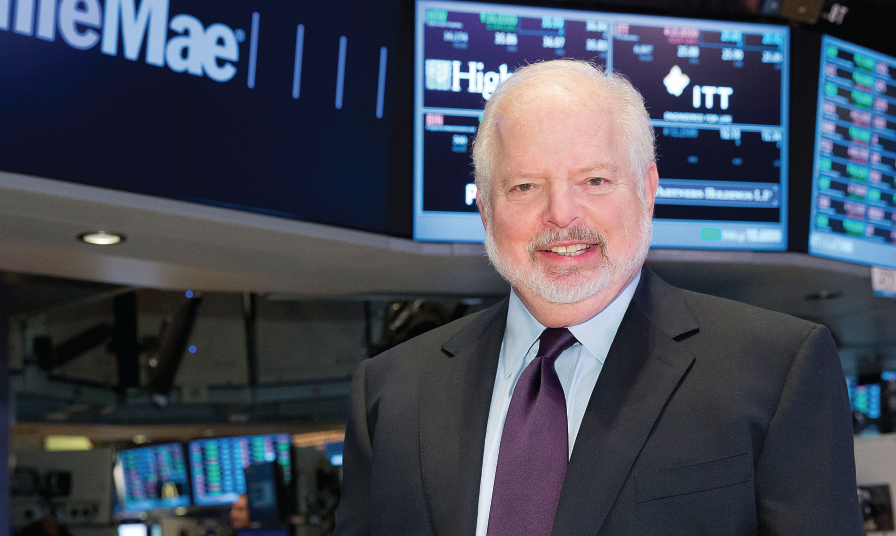Few are familiar with Electronic Mortgage Affiliate, mostly because the name only saw the light of day for a few weeks. But Ellie Mae, as the company is now known, has become a leading provider of enterprise-level, on-demand automated solutions for the residential mortgage industry.
The company’s cofounder and CEO is Sig Anderman, an entrepreneur at heart who is on his fourth successful business venture in the mortgage technology and real estate space over the past three decades.
And that doesn’t even count his bee-keeping business on the side: Sig’s Bees.
Anderman built his first mortgage company in 1982, and remained a part of the leadership even after selling it, until the early 90s. By that time, a new opportunity proved irresistible to Anderman.
“I have always been fascinated by technology even though I am not an engineer,” Anderman explained.
“With the advent of the Internet in the late 90s, I was fascinated by the prospect that you could apply technology in general and the Internet in particular to the mortgage process.”
Looking at the loan origination system that was in place at the time, Anderman realized that the process of making loans was highly dysfunctional and inefficient, with paper, data collection and forms.

“I became convinced that if we applied the Internet and other technology to the mortgage space that we could automate the entire process and eliminate massive amounts of wasted effort and time,” he noted.
Anderman co-founded Ellie Mae in 1998 and has been on that quest of marrying mortgages to technology for the last 15 years.
“My vision was to automate everything automatable, and in the business of processing and funding loans, that is literally everything,” Anderman said.
To begin with, the company looked at the entry points of the methods used to acquire customers and decided that the core functionality should be the Loan Origination System, launching Encompass360 in 2004.
In the early 2000s, loans were being originated by a whole array of lenders, Anderman explained.
But by 2005 and 2006, Ellie Mae began to focus its efforts on mortgage bankers and mortgage lenders.
“We felt that the future of the industry was in mortgage lenders rather than in mortgage brokerages,” Anderman said. “We focused Encompass on mortgage lending. So that was the strategic decision to build a robust entity that focused on the challenge and business of making loans and lending to borrowers.”
From there, Ellie Mae made the decision to create an end-to-end solution.
Rather than check for compliance at the end of the mortgage process, Anderman had the vision to build quality right into the product. “We wove compliance straight into the fabric of the LOS,” Anderman said.
“We are well on our path to automating everything you can imagine that could be automated to drive all this efficiency and quality into the product, in addition to driving cost down,” he explained.
As an avid sailor, Anderman sees many similarities in operating his business and manning his boat, also named Ellie Mae.
“In both sailing and running a company, you have a goal and usually there is no straight line from the starting point to the goal or finish line, so you are tacking along the way,” Anderman said.
In a rapidly changing mortgage environment, Anderman’s ability to steer Ellie Mae will be more critical than ever.
“As the market moves ahead, everyone is predicting a mortgage origination volume reduction around 35% for the entire industry,” Anderman said.
That lower volume creates key challenges and opportunities for customers.
“The challenge is that there are fewer loans. At the outset, you have the same number of people trying to get a piece of pie.
“The survivors will have to become as efficient as possible, while at the same time creating quality and compliant loans. There is no way to do that without automation,” Anderman said.
“The only way to ensure that you have a quality loan is to apply technology that can help you make quality loans without just throwing people at it.”
That need for automated compliance means Anderman is very optimistic about 2014. The sales pipeline for products has grown, and the company added a record number of customers in 2013.
“We expect 2014 to be another banner year for Ellie Mae,” Anderman explained.
“We keep adding more customers, which drives growth, and we keep adding functionality.
“It costs a little over $6,000 to put a loan on the book. A big percentage of that, from my experience, is just wasted effort that could be done electronically,” he added.
By adding functionality, Ellie Mae can lower the lender’s cost of originating and at the same time increase its revenue. “If it can save a customer $100 and charge them $20 for example, it is a great win-win deal for our customers,” Anderman said.
In 2012, Ellie Mae decided to take its business to the next level and go public by registering its stock.
“I felt that the future was going to be more demanding and the regulations would just not stop,” Anderman said.
“I wanted to make sure that we had the resources and the access to capital that would be required to serve our customers and distinguish us from the competition.”
The company was listed on the board in 2012, and officially rang the New York Stock Exchange bell in early 2013.
During its first year on the market in 2012, Ellie Mae was the number-one performer in terms of stock price appreciation compared to all other stocks.
“It was a great milestone for a company that basically started with a diagram on a menu,” Anderman explained.
“When you think of a business, you have a goal and no matter how brilliant everybody is, it is almost impossible to get to the goal and you have to keep changing your course slightly to move toward it,” he said.





